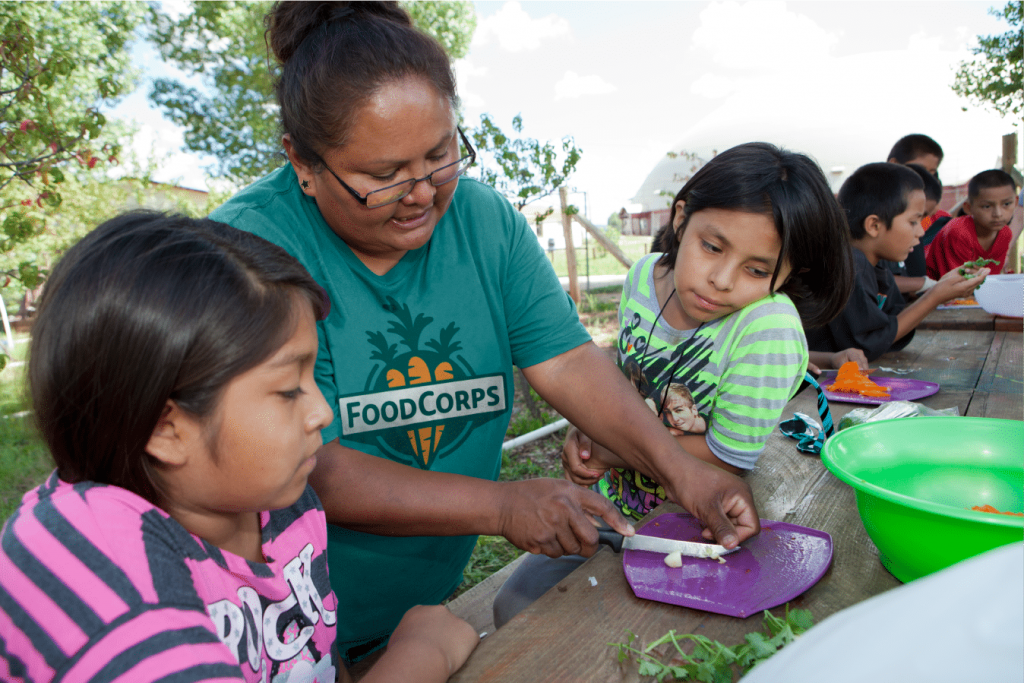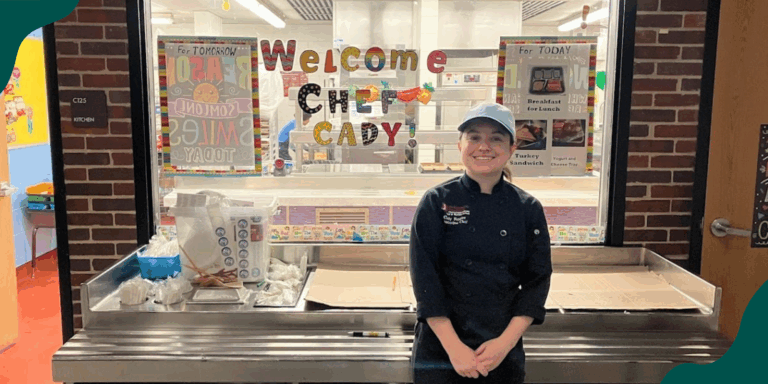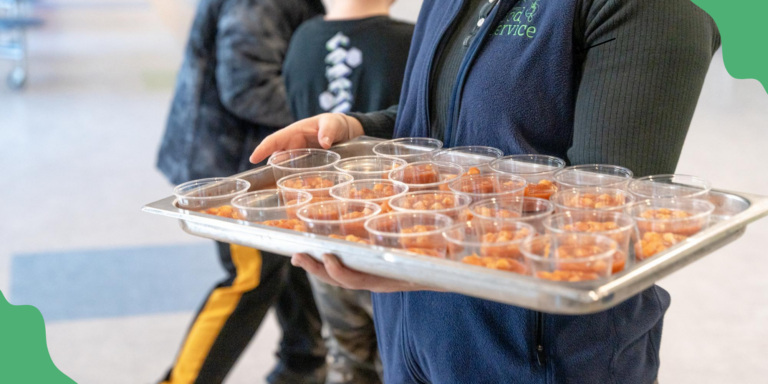How FoodCorps Engages With Native and Indigenous Communities
Zeke Smith, FoodCorps’ Vice President of Programs, shares how we partner with Native and Indigenous communities and how we came to these practices.
Zeke Smith, FoodCorps’ Vice President of Programs, shares how we partner with Native and Indigenous communities and how we came to these practices.

In recognition that this is Native American Heritage Month, I want to share FoodCorps’ perspective on how we engage in and with Native and Indigenous communities. Since our first service cohort in 2011, we have been intentional about partnering with organizations and Tribes in Indigenous communities. Over this period of time, we have learned many things from these communities which have informed our current practices. Here are a few.
We have made it a customary practice that when FoodCorps hosts events, trainings, or large gatherings, we begin with a Land and Indigenous Peoples Acknowledgement. This includes a recognition of the people who occupied the land upon which we are meeting prior to colonization; an acknowledgement of the ways colonization and American expansion have oppressed these and other peoples on these lands; and a callout of current efforts by Indigenous peoples in the local community. When possible, we make space in our meeting for representatives from local Indigenous communities to share their relationship to the land, their community and cultural activities, and the organizing they are involved in. This practice is designed to make FoodCorps’ role in both propagating and decentering colonialism more explicit, and to encourage deepening our relationships to local Indigenous communities.
In addition to instituting a practice of acknowledgement, we have shifted how we talk about Native and Indigenous communities we work with. Over the years, people have referred to Indigenous peoples living in the United States a number of different ways. Native American, American Indian/Alaska Native, Tribes, Indigenous Hawaiians—all of these names have been used to describe the many Indigenous peoples to North America. Based on consultation with Indigenous peoples and community leaders, FoodCorps uses the following language:
We have a variety of relationships with Native and Indigenous communities, and our engagement with them varies based on these relationships.
We partner with culturally specific nonprofit organizations born out of these communities. Particularly in urban communities, these organizations are often designed to serve a diversity of Native and Indigenous communities as opposed to specific Tribes or Nations. Many Indigenous peoples were forcibly removed from their homelands to urban communities through multiple Federal Indian Relocation Acts in the 20th century, and these Native and Indigenous organizations have been a place for these peoples to find culture, community, and collective advocacy.
On Native and Indigenous Sovereign Lands, we often hold a formal relationship with the sovereign governance body or with a subsidiary social service or local education agency of the Nation. We recognize their sovereignty and that our relationship in these cases is not the same as with a community-based or local municipal agency, but is more akin to our relationship with the federal government.
Additionally, we work with local school districts and schools that serve a significant population of local Indigenous community members. While the school district itself may not have an Indigenous affiliation, we often adapt our work and curriculum to be responsive to the local Indigenous communities they serve.
Lastly, there are Native and Indigenous students in most every school and community we work with. Sometimes these students have direct and consistent relationships to a sovereign Indigenous community, and sometimes these bonds have been broken. We are very intentional about providing our FoodCorps service members with curriculum and supports which they can adapt to incorporate culturally responsive approaches to ensuring students make connections between food, land, and the Native and Indigenous communities connected to their schools.
Each of these practices reflects an evolving appreciation for the role FoodCorps can play in partnership with our Native and Indigenous communities. We have a responsibility to support these communities by adapting our work to their visions and cultural practices. We have the opportunity to do this with humility and respect, and will continue to adapt and modify our practices as we learn from our partners in Native and Indigenous communities.
During this Native American Heritage Month, we hope you will also consider what impact you have on your local Native and Indigenous communities. Do you know who was in community with the lands you occupy prior to colonization? Do you know what sovereign nations and Native and Indigenous organizations continue to have a relationship to the land and local community? How are you intentional about your relationships with these communities and what are your practices that shape these relationships?

The Policy Brief: 2025 State Policy Updates

Alumni Spotlight: Cady Molloy, School District Executive Chef

6 Careers in Food That Make a Difference